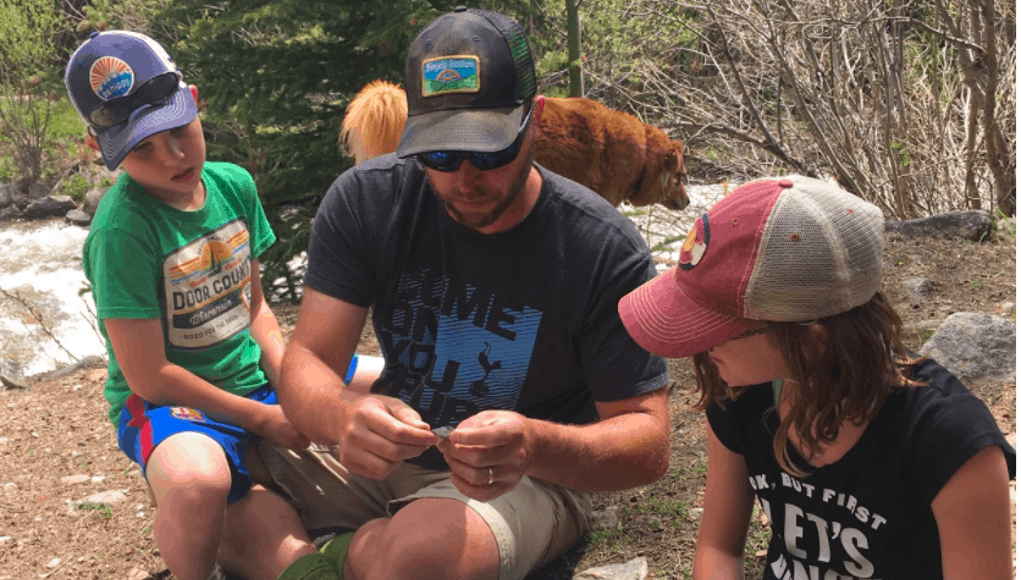Smart Review | Is There PBE In Your Water?

“Nature is the greatest teacher” was the mantra that I was taught as a young camp counselor, and is the mindset that led me to become a biology teacher. After 19 years in education, I have made it my personal mission to give kids experiences that will give them cause to care about the environment.
As climate change and environmental degradation have become ever-present facts of life in our world, this mission feels more important than ever. And while being outdoors for extended periods of time is an important start to sharing my mission, I feel more obligated than ever to incorporate scientific inquiry into our times outdoors as a family.
Not being a “beach vacation” kind of family, when it’s time to get out of town, we tend to end up in the Great Smoky Mountains or closer to home in Brown County, Indiana. Wherever it is we go, there is always hiking. We feel it is important to keep kids connected with the outdoors, have wildlife encounters and simply be unplugged.
Whenever we set forth on a day hike, my youngest always wants to know what our “goal” is (“Is there a waterfall at the end? Are we climbing a mountain? What will we be looking for? Why are we going on a hike???”) Often, there is no goal, no destination– just a need to get outside. But in advance of a vacation to Colorado this past month, I was asked to field-test the Intermediate-Level water testing kit by TestAssured.
Perfect! We had a “goal” for one of our hikes involving some fun place-based education. Not only would we try out this product but we would have a chance to practice some scientific methodology in an authentic setting (and reverse any of our possible summer brain drain in the process).
Let The Testing Begin
The kit contains:
- Enough materials (tablets, test strips, and vials) to run tests on four different water samples for pH, alkalinity, hardness, Iron, total Chlorine, Nitrate, Nitrite and Copper.
- A hand-held probe that provides an instant measurement of temperature and Total Dissolved Solids.
While the test is designed to test the safety of drinking water from a tap, my lab assistants and I (my kids Josie, age 12, and Michael, age 8) tested stream water from a lovely Rocky Mountain stream at 9,000 feet. If you’ve ever been camping you’ve probably wondered if any water nearby was safe to drink, so we decided to find out.
 The first test we conducted was done without any advance preparation and we read the instructions on the spot. Sample water is collected in a small vial and two different dip strips are used to test for the presence of trace elements, ions and particles. Multiple tests can be conducted at one time, with each result read by a color change.
The first test we conducted was done without any advance preparation and we read the instructions on the spot. Sample water is collected in a small vial and two different dip strips are used to test for the presence of trace elements, ions and particles. Multiple tests can be conducted at one time, with each result read by a color change.
 The water-resistant instruction cards provide written instructions and color spectra for interpreting the tests. In this way, a quick measurement of multiple water parameters can be made at one time. Just one of the tests (iron) involved dissolving a tablet as a required reagent to get a measurement, and the instructions clearly state to perform this test last so that the same water sample can be used for all of the tests.
The water-resistant instruction cards provide written instructions and color spectra for interpreting the tests. In this way, a quick measurement of multiple water parameters can be made at one time. Just one of the tests (iron) involved dissolving a tablet as a required reagent to get a measurement, and the instructions clearly state to perform this test last so that the same water sample can be used for all of the tests.
 The hand-held probe used to measure Total Dissolved Solids and temperature is very easy to use and has the option to store results for later reference. The kit also includes a booklet for recording the results of each test, up to four samples.
The hand-held probe used to measure Total Dissolved Solids and temperature is very easy to use and has the option to store results for later reference. The kit also includes a booklet for recording the results of each test, up to four samples.
 The Verdict & Recommendations
The Verdict & Recommendations
We found the kit to be quite easy to use, especially after one repetition. The kids were keen to do a comparison of the stream at three different spots, and we found that we could perform the tests much more quickly after the relatively short learning curve (and in case you are wondering, we concluded it wasn’t a good idea to drink the water at any of the test sites).
There are not many downsides to the kit, but we did have a few recommendations:
- We wondered about the amount of foil trash the kits produced, and if there were a way to package the strips together and avoid so many individual wrappers.
- Another mildly confusing aspect to the test strips was which color square corresponded to which test. Though the instructions provide a well-labeled diagram, we wondered if it would not be too much extra trouble to add labels to the strips above each square.
- Finally, the information provided in the small data notebook was a bit sparse on details as to why the tests needed to be done in the first place. We talked about the different parameters, such as pH and nitrate, and made predictions based on our setting, but it seemed like there could have been a bit more background information and also more guidelines for interpreting the tests (as in what constitutes a safe/ unsafe level of a certain solute in the sample.)
Conclusion
Josie and Michael loved the experience of water testing and it added a dimension of inquiry to our hike. And even if the kit is intended to be used with water from a tap, the act of testing any water is fundamentally important to making students question assumptions they have–clear, cold water certainly looks clean, and we all assume that the water that comes out of the faucet is safe. But is it really? We may become complacent in this belief and falsely assume that we do not need to wonder about the safety of other things as well.
Testing water is a simple, accessible and fundamental exercise in scientific inquiry, and this test does the job very well. I plan to take a look at some of the more advanced kits to use with my high school biology students in the upcoming school year, and I could see this or other kits produced by TestAssured having great applicability for our project-based learning science courses. We have a creek just ten minutes by foot from school, which is a constant source of inquiry for us as we examine the health of our local watershed, and so a kit like this one would also work at school for implementing place-based education.
This type of testing transcends most age levels, and there is no reason why the test parameters covered by this kit could not also be used by students ages eight or younger. This gives me reason to believe that my 17 and 18-year-old students may very well be partnering with the young students in our project-based elementary schools to build our inquiry skills, become “citizen scientists” and begin fostering a concern for and love of the natural environment. The tests we did on vacation have me excited about the possibilities for next school year!
For more, see:
- Five Tips for Testing the Place-Based Education Waters
- Avoid Summer Brain Drain with Place-Based Learning
- Getting Smart Podcast | Implementing Place-Based Education
A kit was provided to the author for this review. If you are interested in having GettingSmart.com review your innovative product or book, please contact [email protected].
Stay in-the-know with all things EdTech and innovations in learning by signing up to receive the weekly Smart Update.






0 Comments
Leave a Comment
Your email address will not be published. All fields are required.